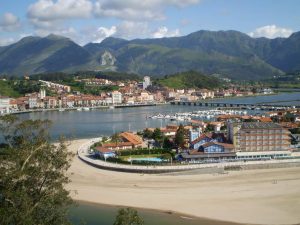
The village of Bruma, located in the province of A Coruña, is a destination that attracts both pilgrims and travellers alike. What secrets does this small corner of Spain hold, and why do so many people choose to stop here on their journey to Santiago de Compostela?
In Bruma, every stone tells a story, and every corner offers a unique experience. Join us on this journey to discover what to see in this intriguing village.
Índice de contenidos
- 1 A destination that evokes beauty and mystery
- 2 The pilgrim hostel: the last refuge before Santiago
- 3 The history of the old hospital: a cultural legacy
- 4 The San Lorenzo Chapel: a Gothic treasure from the 16th century
- 5 Local gastronomy: Casa Graña, the heart of Bruma
- 6 Activities and tips for pilgrims in Bruma
A destination that evokes beauty and mystery
Bruma is more than just a point on the map; it is a destination that evokes beauty and mystery. Its strategic location on the English Way makes it a must-see stop.
Planning your route on the Camino de Santiago becomes essential if you want to fully enjoy the experience. Travellers have several routes to choose from.
- The Camino Primitivo through Asturias offers breathtaking landscapes and a direct connection to the history of the route.
- Alternatively, the pilgrimage from Santiago to Finisterre allows walkers to experience the culmination of the journey at the Atlantic Ocean.
- For those starting their adventure in Galicia, the beginning of the Camino in Ferrol is a popular option. The English Way to Compostela is especially appealing if you’re looking for a less crowded experience.
- The route from O Cebreiro offers a journey filled with history and nature, ideal for those seeking a more traditional experience on the Camino Francés.
The pilgrim hostel: the last refuge before Santiago
The public hostel in Bruma is a key stop for pilgrims on the English Way. This establishment is designed to provide rest and comfort to those who arrive tired after a long day’s walk. Its history dates back to the days when these paths were travelled by those aiming to reach Santiago for religious or personal reasons.
The hostel has several facilities, including bunk beds, showers, and a common area where walkers can share their experiences. The staff’s care is exceptional, and visitors frequently note the warm welcome they receive.
This place provides not only a roof over pilgrims’ heads but also fosters a sense of community among travellers. The hostel’s significance extends beyond its role as a place to sleep. It is located a short distance from the old pilgrim hospital, which is also worth a visit. This proximity makes the hostel a strategic point.
The history of the old hospital: a cultural legacy

The old pilgrim hospital has a rich history documented since 1175. This facility was founded to attend to weary and sick travellers. Over the centuries, it has been witness to countless stories and anecdotes.
Among the historical figures who stayed there was Emperor Charles V. His presence highlights the hospital’s significance as a place of rest for influential individuals. The hospital’s walls have heard many visitors’ stories, becoming a symbol of the road to Santiago.
Today, the old hospital stands as a tangible reminder of the past. Although it has evolved over time, its essence remains. Visitors can learn about its history and reflect on the lives that have passed through its doors.
The San Lorenzo Chapel: a Gothic treasure from the 16th century

The San Lorenzo Chapel is a prime example of late Gothic architecture, built in the 16th century. This temple has been a spiritual symbol for many travellers on the Camino de Santiago.
Although it has undergone several renovations over the years, it still preserves original architectural elements. The most notable is the original triumphal arch, now hidden behind a false ceiling. The interior is decorated with religious images and sacred art, reflecting the deep devotion of its visitors.
The serene atmosphere here invites reflection and meditation, making it an ideal refuge for those seeking spiritual peace. For many pilgrims, the San Lorenzo Chapel represents a space where they can pause and reconnect with their faith before continuing their journey to Santiago.
Local gastronomy: Casa Graña, the heart of Bruma
The local cuisine in Bruma is also outstanding. Casa Graña is the only restaurant in the village and has become the culinary heart of the area. This establishment offers a cosy setting for visitors to sample traditional Galician dishes.
The menu includes a variety of options, from fresh seafood to classic dishes like Galician-style octopus. Reviews of the food quality are generally positive, with many praising both the flavour and presentation. Additionally, the customer service is another highlight, with staff making every guest feel welcome and satisfied with their dining experience.
Activities and tips for pilgrims in Bruma
Bruma offers various activities for those who choose to stop here. Besides exploring the hostel and chapel, pilgrims can enjoy walks in the surrounding areas. The nearby landscapes are ideal for connecting with nature.
A useful tip is to visit Mesón do Vento, located just one kilometre away. This spot provides additional dining options and services that may be useful during your stay.
Travellers can also participate in local cultural activities or simply relax before continuing their journey to Santiago. Ultimately, it is a place where each moment can be meaningful.
Bruma is not just a stop on the route; it is an experience rich in history, culture, and community. Don’t miss its welcoming hostel and historical landmarks. Every corner invites exploration and appreciation. By visiting, you can find a place of rest and a deep connection to the traditions that have shaped this land over time.









